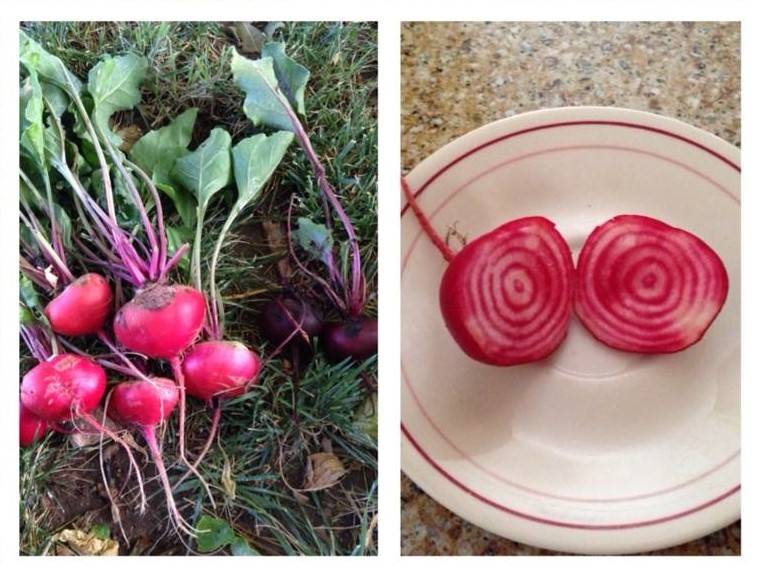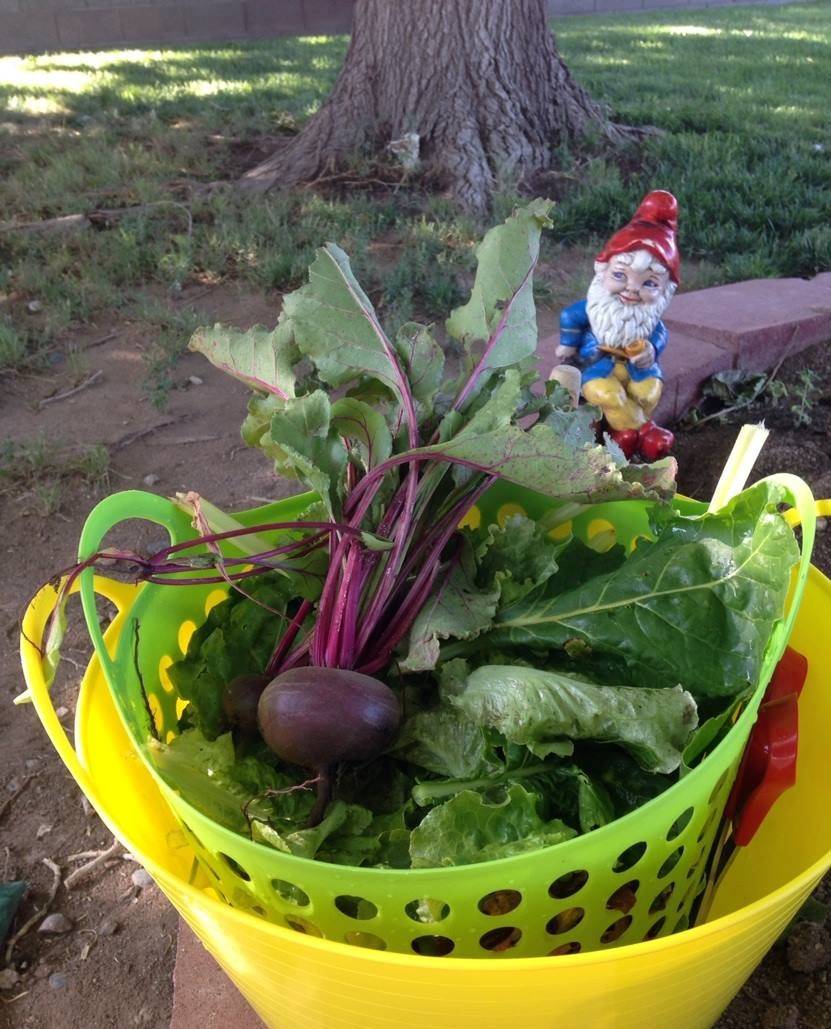IN SEASON: The beat on beets
I’ve noticed that one of the most requested items at the Farmers Market is beets. It mystifies me because I am not a fan of the flavor. Beets are fun to grow though, and very versatile. They are also easy to grow and have a quick turn-around from seed to harvest.
When it comes to what variety to plant you could stick with the old standards that you can buy in any grocery store, but why? There are so many interesting varieties available to the home gardener. Experimenting with different varieties is half the fun when growing your own garden.
Some lesser-known beet varieties
I love to grow Chioggia beets with children. When cut open they reveal concentric lines of stark white and deep red in the formation of a bullseye, which they seem to get a kick out of. Chioggia beets look especially lovely when thinly sliced atop a salad.
Long Season Winter Keeper is an heirloom beet that has been making a comeback in the market gardening world. Its hefty round purple root easily weighs in at 5 ounces or more. It sports a long, spindly tail several inches long distending from its smooth skinned purple body.
If you are looking for a tender and easy to slice beet for salad, look no further than Formanova. This cylindrical beetroot is known for having a sweeter, milder flavor than most beets and is favored by chefs far and wide.
Mammoth Red Mangel is a showstopper with its blazing orange-red hues. Color is not the only thing that sets Mammoth Red Mangel apart from other beets. It has been known to grow up to a whopping 40 pounds if left to its own devices. These gigantic beets are often used for animal feed but are popular fare for humans as well when harvested at a small size.
Planting and caring for beets
Beets should be directly sown into the garden. Like most root vegetables, they do not like to be transplanted. The ideal soil for beets is loosely worked and rich in organic matter. In the fall and winter months they will perform best in full sun.
Plant beet seeds at least 1 inch apart by gently sprinkling the seeds in a straight line over the soil, barely covering the seeds with soil, just enough so that you can no longer see them. Lightly water them in with a fine mist and keep the soil moist to the touch. Once the seeds have sprouted and are a few inches tall, thin them to 1 seedling every 3 inches. The thinned greens can be used for salad.
Beets do not need a lot of care after they get going. Frequent watering might be necessary, and the soil should not be allowed to dry out. Keep the soil moist to the touch but not soggy and water as needed.
Beets do not need to be fed often. A side dressing of compost halfway through the season is more than enough to give you a strong and healthy harvest.
Beets can survive a freeze when winter comes, though their greens may die back. Some say that beets taste sweeter after they have been through a freeze. If greens are your primary reason for growing beets you should consider giving them a cover when cold nighttime temperatures arrive.
There are not many pest or disease issues to be concerned about when it comes to beets. I occasionally lose the tops to a rabbit or rat that has found its way into my garden, but for the most part they seem to be left alone. If beet root encountered a stone or stick while growing, you may encounter a misshapen beet here and there.
Harvesting and storing beets
If you are growing beets primarily for the greens, you should be able to begin harvesting within 3 weeks. You can continuously harvest greens from a single beet by pulling off the larger outer leaves as you need them. New leaves will form and grow but you may want to plant beets every 3-4 weeks during the season to have a constant supply.
If you are growing for the beet root, they are best harvested at about 2-3 inches in circumference. Generally, this will be between 40-75 days after planting. They do not take long to reach a nice size for eating.
To harvest, grab the beet at the point where the stem meets the ground and give a gentle tug, shaking off the soil as you pull the beet free from the soil. Brush the soil from the beet before storing. Do not wash the beet until you are ready to consume it.
To store beets, first snap the greens from the root. The greens can be eaten fresh or cooked and will keep in the refrigerator for several days. The beet root can also be kept in the refrigerator for several weeks.
There are several methods for preserving beets including pickling, canning, dehydrating, and freezing.
No matter how you prepare them, these interesting varieties are sure to dress up your dinner salad in a rainbow of color all through fall and winter.
Terri Meehan is the Founder of Southern Nevada Gardening Association a regional group. She is a garden mentor and local farmer in Pahrump. Send questions or comments to her at sonvgarden@gmail.com
Marvelous Mesquite Bean molasses
Make the most of your Mesquite bean harvest with this easy recipe for Mesquite Bean molasses. A few simple ingredients and a slow cooker are all you need.
Ingredients
1lb cleaned and dried Mesquite beans
1-gallon cold water
Directions
Break the beans into small pieces or smash them gently with a mallet. Place the beans into the slow cooker and cover with the water. Cook the beans on low for at least 24 hours. Let the liquid cool and then strain the beans with a coffee filter or cheesecloth.
Return the liquid to the cleaned slow cooker and cook it on low with the cover left slightly open until the liquid reduces by half, or about 4-8 hours. The longer you cook the liquid the thicker it will become. Cook for less time if you would rather have syrup.
Once the liquid has reduced to your desired consistency, pour it into clean class jars and keep in the refrigerator for up to 3 weeks. Use it as an alternative to molasses in cookies or other sweets or as the base for a smokey BBQ sauce.
Enjoy!

















